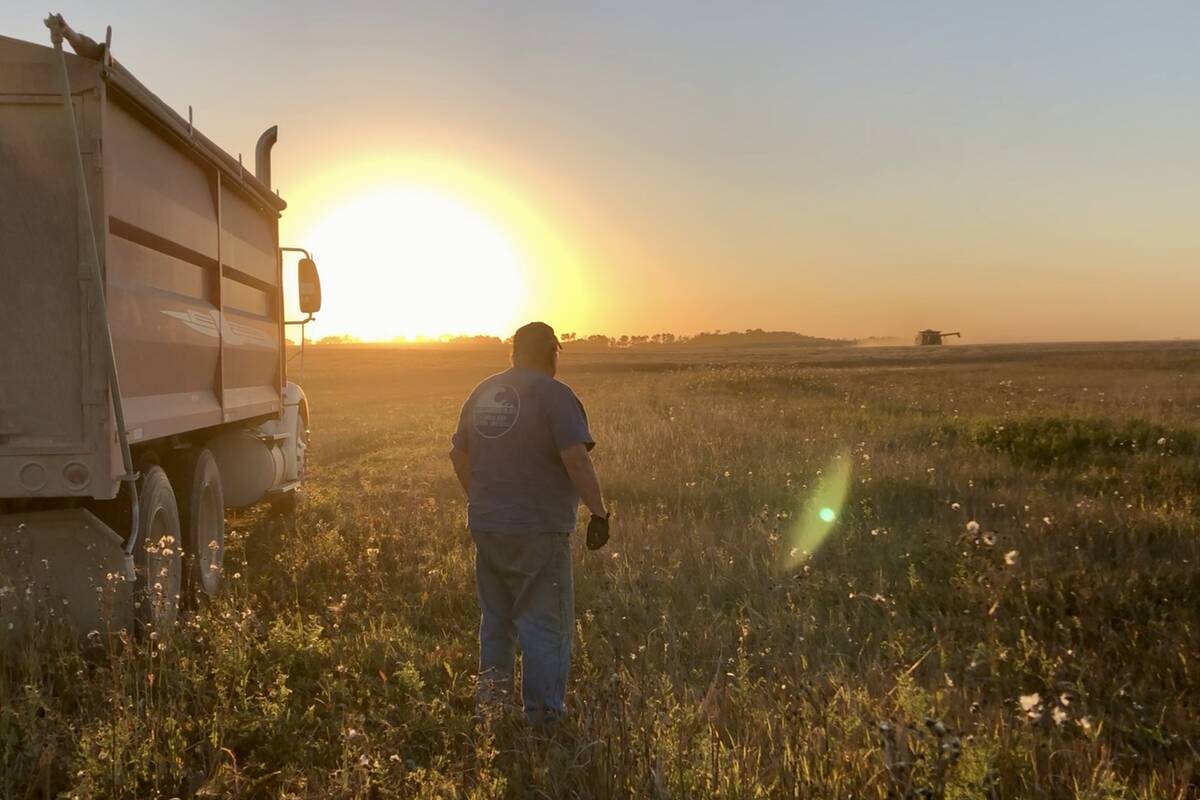OTTAWA — Farm transition is often characterized as a power struggle — the older generation doesn’t want to relinquish control, while the newer generation doesn’t feel valued.
The non-farming siblings want a share even though they’re not involved at all.
Related stories in this issue:
- Tax not sole basis for succession plans
- Good governance, respect help farm transitions
- Probate planning can help families avoid future problems
It can be a messy process that divides families and hurts feelings.
Read Also

VIDEO: Bittersweet harvest for this family farmhand
Bruce Burnett helps his brother harvest wheat and canola for the last time on the family farm in Manitoba where they both grew up.
It doesn’t have to be that way, heard participants at a succession workshop held as part of the recent Canadian Federation of Agriculture annual meeting.
And it comes down to what most people know but have difficulty doing — communicating and planning.
Trevor MacLean, national leader of MNP’s TransitionSmart program, said there are too many unknowns if people aren’t talking and don’t have a plan in place.
He cautioned against triangulation, or the process of having side conversations with some people to get a message to the others. However, he said the problem is rampant when it comes to farm transition.
Families often love to keep score, such as who comes in late or is perceived as not pulling their weight, but there is no place for that in a farming business, he said.
“It is absolutely detrimental to your farm succession,” he said.
“If you have good governance in place, you’ll have those rules to deal with it in a business-like setting.”
Agreements should be drafted when there is harmony within the family and with the help of facilitators, he said. The process will always be emotional, but that can be managed through strong governance rules.
Some of the younger farmers at the workshop said they see farm structure as the older generation at the top and the younger at the bottom. When the younger generation is brought into the decision-making process, they don’t get a final say.
They said younger people want to take on more responsibility but the older generation is not willing to relinquish power because they want to stay relevant. At the same time, the younger generation has to know how to transition from worker to the boss.
MacLean said one way to create space is to give the younger farmer the right to make a decision on a certain aspect of the business. This could be the seeding and input plan for a quarter section, for example, which can help educate both parties.
The owner sees that the farm will be in good hands when it is turned over and the potential successor gets a taste of management.
That said, it’s also important to let young people fail — not so much that farm viability is at risk but enough for them to learn from their mistakes. The younger generation should also see the hardship involved with farming.
Leighton Kolk from Kolk Farms in Alberta said younger farmers can prove to the older generation that they are worthy of being part of the operation.
Ironically, going off the farm to get a job can do that.
“They may say, ‘but if you leave, we’re not sustainable,’ ” he said, and that can get the transition conversation started.
MacLean added there is also the possibility that parents will lose out if they wait too long to approach or include the next generation.
“If Mom and Dad wait too long, are they in fact closing the door on themselves because they are not allowing the next generation to come and have the influence or to actually see the opportunity?” he said.
MacLean said business comes down to three things.
“First and foremost, it’s your values, and we all know that farmers have incredible family legacy values that we hold on to,” MacLean said.
Resources, including natural, financial and human, are second, while the third is process.
“How are you putting together your resources and your values to get the outcome that you desire?”
Contact karen.briere@producer.com


















